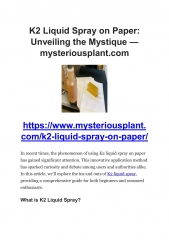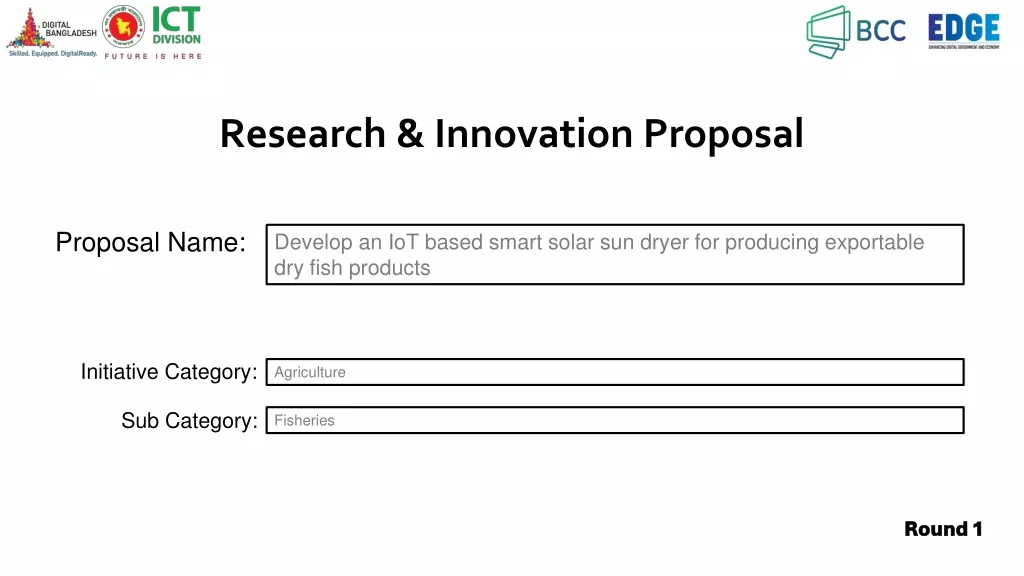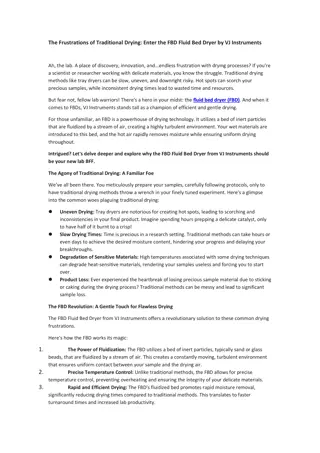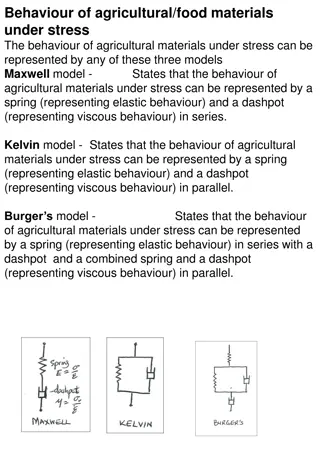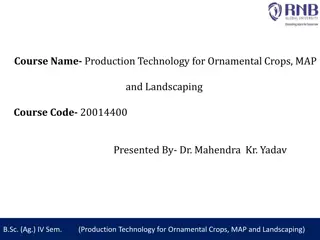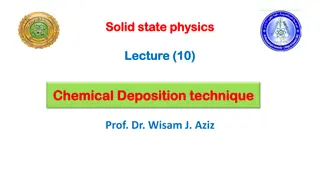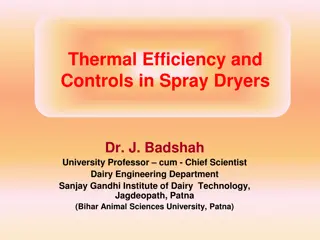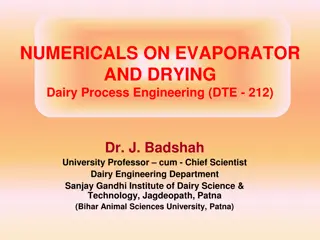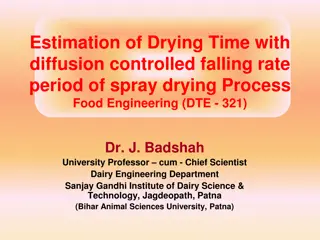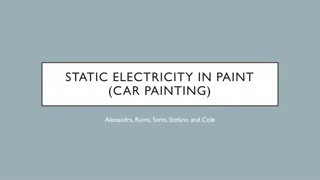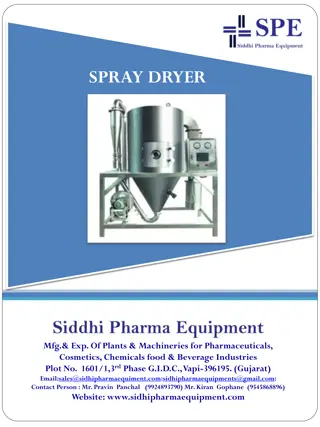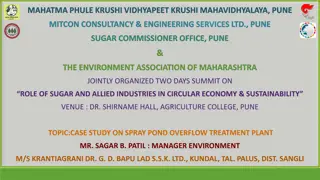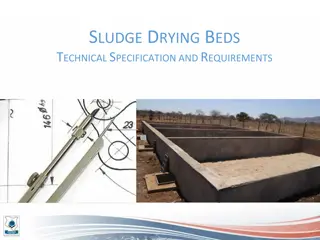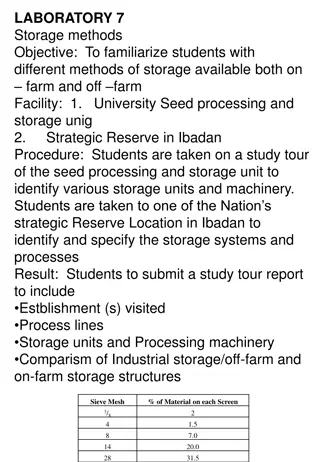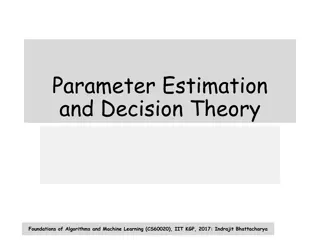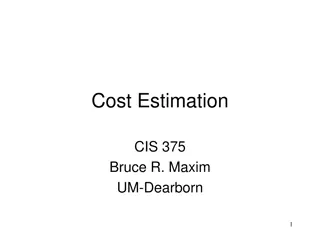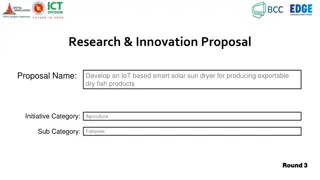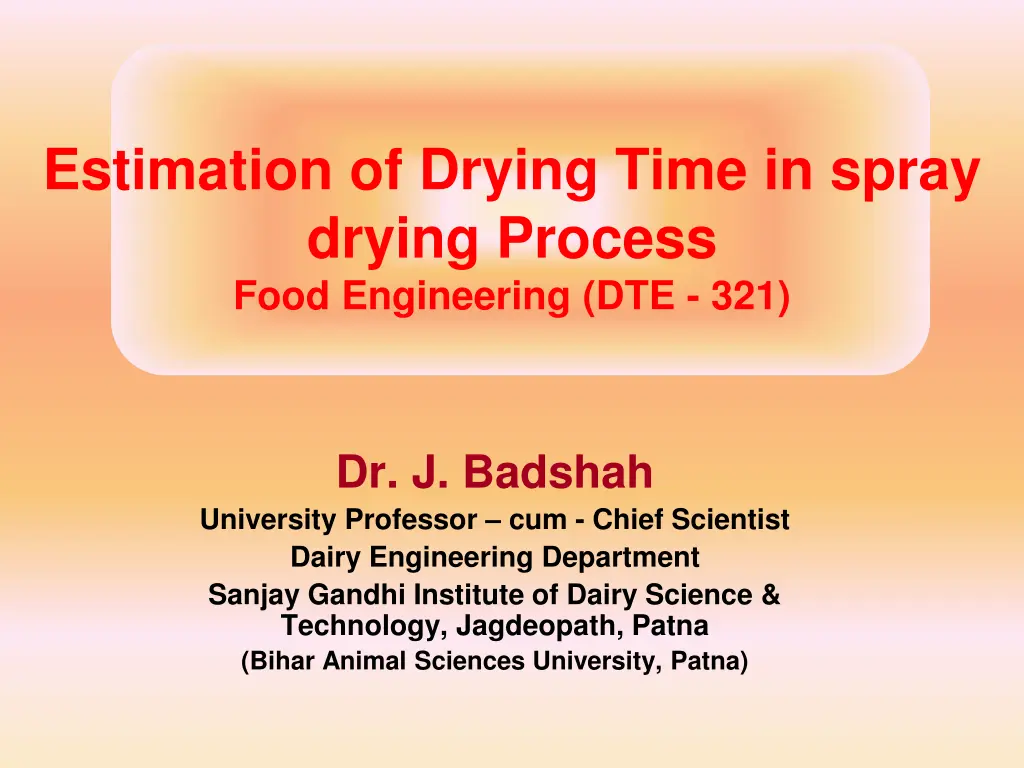
Estimation of Drying Time in Spray Drying Process: Food Engineering Insights
Explore the estimation of drying time in spray drying processes in the food engineering field, including constant rate drying period, drying rate curves, and various transfer mechanisms influencing drying time. Gain valuable insights into the factors affecting drying rate and delve into the importance of moisture movement within solids.
Download Presentation

Please find below an Image/Link to download the presentation.
The content on the website is provided AS IS for your information and personal use only. It may not be sold, licensed, or shared on other websites without obtaining consent from the author. If you encounter any issues during the download, it is possible that the publisher has removed the file from their server.
You are allowed to download the files provided on this website for personal or commercial use, subject to the condition that they are used lawfully. All files are the property of their respective owners.
The content on the website is provided AS IS for your information and personal use only. It may not be sold, licensed, or shared on other websites without obtaining consent from the author.
E N D
Presentation Transcript
Estimation of Drying Time in spray drying Process Food Engineering (DTE - 321) Dr. J. Badshah University Professor cum - Chief Scientist Dairy Engineering Department Sanjay Gandhi Institute of Dairy Science & Technology, Jagdeopath, Patna (Bihar Animal Sciences University, Patna)
Drying Rate Curve: Constant, Falling and Diffusion controlled period curve The form of drying rate curves depends on Momentum, heat and mass transfer, physical properties of the food, air and water vapour mixtures, and macro and microstructure of food product. Importance of mechanism mechanism by which moisture moves within the solid.
Drying Time during Constant Rate Period Constant rate drying time in terms of moisture content on dry basis a. Let initial moisture content = wo kg of moisture /kg dry solid b. Critical moisture content = wc kg of moisture/kg dry solid c. tc = Constant Rate period drying time d. Drying rate during constant rate drying period = mc Kg of moisture /kg dry solid/second e. Therefore, mc = (wo - wc )/ tc f. tc = (wo - wc )/ mc Constant Rate drying time in terms of heat transfer a. Convection heat Transfer rate q = h A (TA Ts) b. h = Film heat transfer coeff. in W/ m2 K c. A = surface area of product d. TA = Heated air temperature, C e. Ts = Product surface temperature, C= Wet bulb temp. because a film of water remains maintained similar to psychometric wet bulb
Drying Time during Constant Rate Period Constant rate drying time in terms of water vapour transfer rate i. Water vapour transfer rate = Nc ii. Nc= km A Mw P (ws - wa )/0.622 R TA iii. km = Mass transfer coeff. in m/s iv. A = Surface area of product v. Mw = Molecular weight of water vi. P = Atmospheric Pressure in Kpa vii. TA = Absolute Temperature in Kelvin viii. R = Gas Constant = 8314.14 m3 Pa/Kg mole . K ix. Wa = Humidity ratio of air in Kg of water/kg dry air x. Ws = Humidity Ratio at Product surface = Kg of water /kg dry air xi. Constant Rate drying time tc = (wo wc)/ Nc Therefore keeping mc, we have drying time (tc) in terms of water vapour transfer rate i. tc = 0.622 R TA (wo wc)/ km A Mw P (ws - wa )
Constant rate drying time in terms of Latent heat of vapourization at wet bulb temperature of surface Let HL = Latent heat of vapourization at wet bulb temperature of surface, in J /kg moisture Equating Rate of mass transfer with rate of convection heat transfer, we have Q = Nc HL = h A ( TA Ts ) Joule/second mc = h A ( TA Ts ) /HL As tc = (wo - wc )/ Nc Therefore, tc = HL(wo - wc )/ h A ( TA Ts ) Therefore, Constant rate Drying Time tc equations: tc = 0.622 R TA (wo wc)/ km A Mw P (ws - wa ), and tc = HL (wo - wc )/ h A ( TA Ts ) given by two
Drying Time in single Falling Rate Period of drying from CMC to EMC Consider the falling rate drying curve follow the straight line equation as follows: a. NF = aw +b b. d NF = a. dw +0 = a . dw c. dw = d NF /a d. If NF = - dw /dt e. dt = - dw/ NF = - 1/a d NF / NF f. Keeping limit of drying time from 0 to tF when Drying rate varies from Nc to NF g. Therefore, tF = - 1/a ln (NF / Nc ) = + 1/a ln ( Nc / NF), where h. a = d NF / dw = (Nc - NF ) / (wc w) = Nc / wc , when NF =0 at w = 0 As NF = a w and Nc = a wc, because intercept b =0 at x axis and we can write Nc / NF = wc /w Therefore, tF = wc / Nc ln (wc / w) Therefore Total drying time t = tc + tF t = (wo wc)/ Nc + wc / Nc ln (wc / w)

